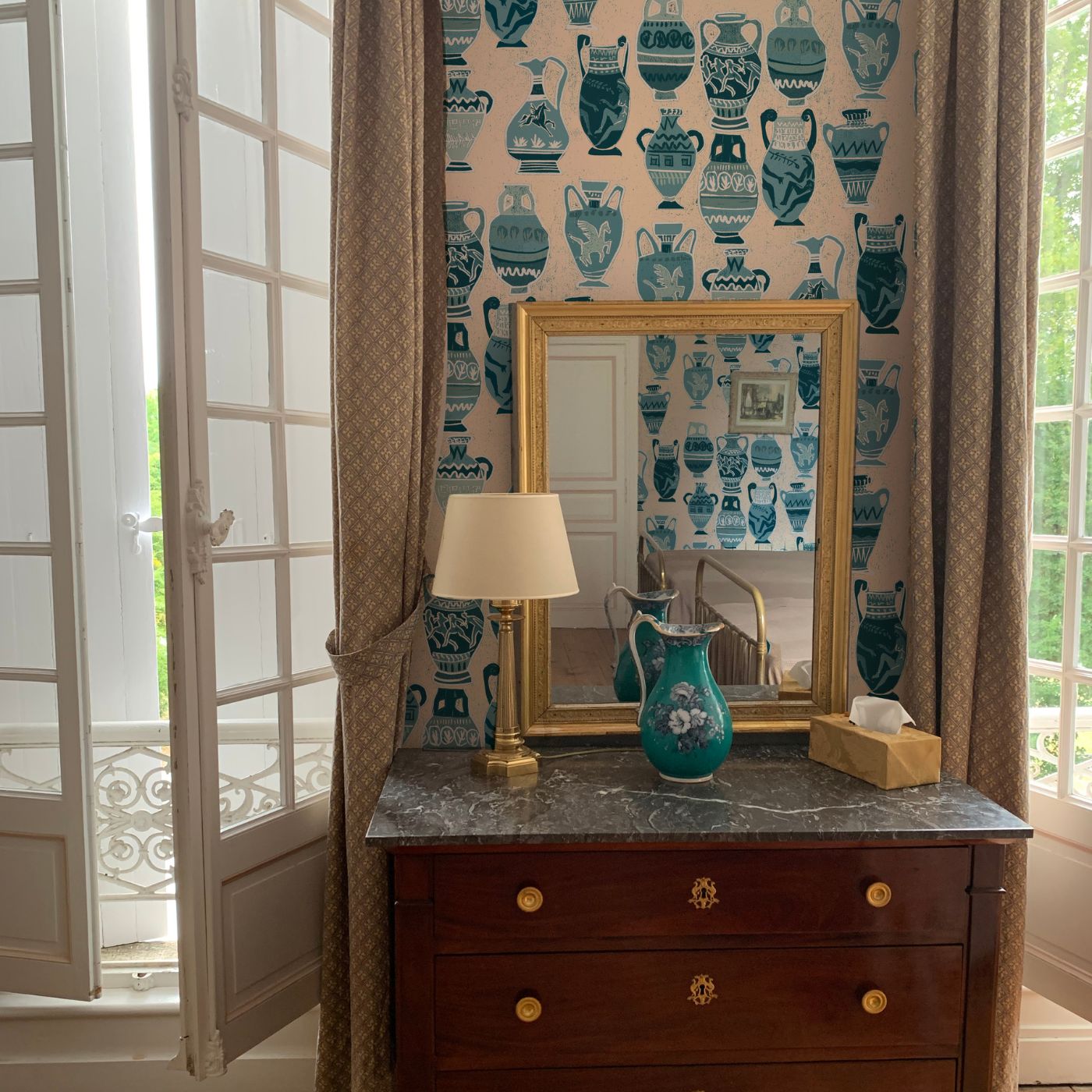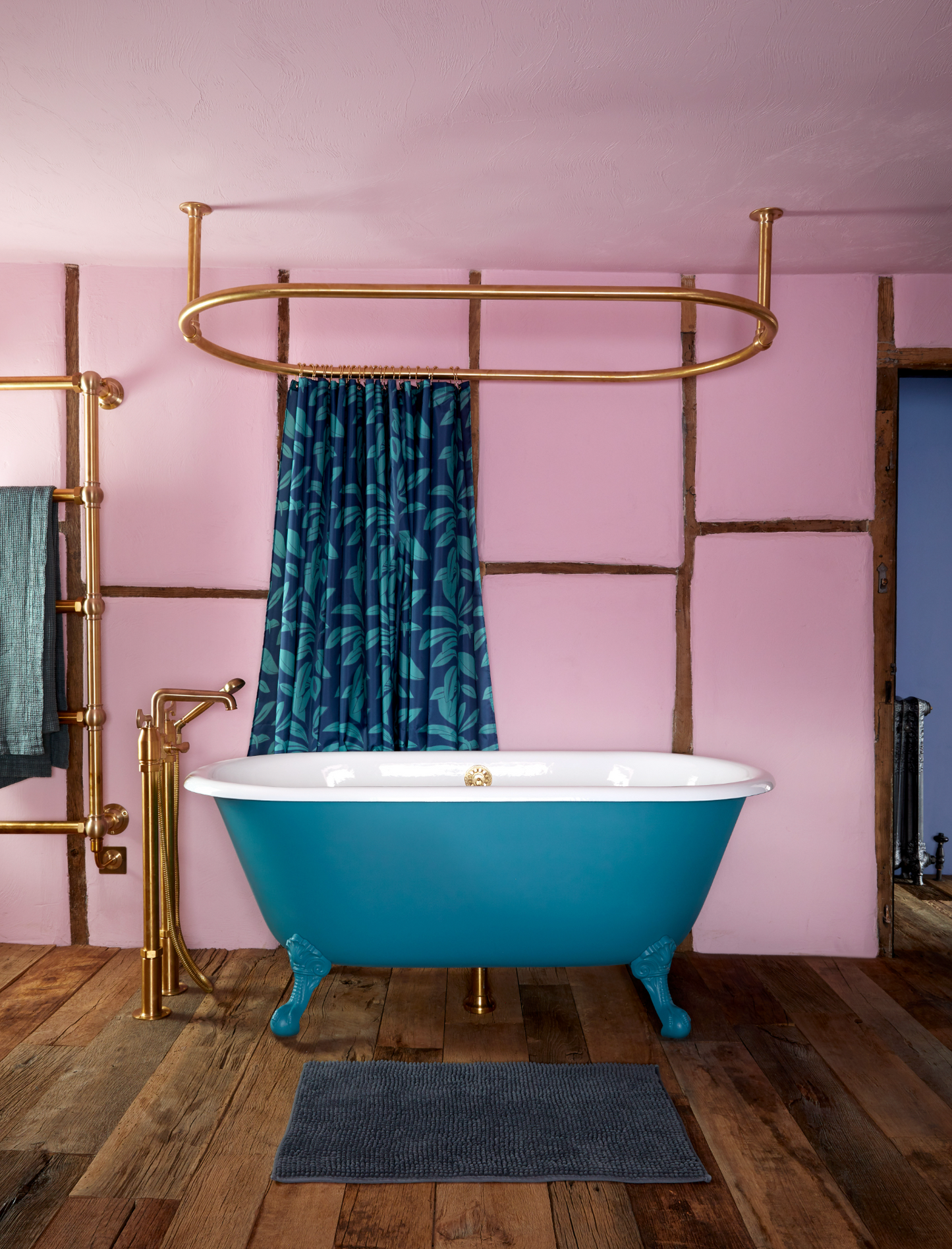
Colours play a significant role in interior design, they can affect your emotions, mood and sometimes behaviour. Colour psychology can be a powerful tool to decorate your home creating a mood or atmosphere in a space.
In this blog post, I'll be discussing five tips for using colour psychology to decorate your home, so you can create a space that will make you feel uplifting, calm and energised.
Introducing colour psychology: Have you ever wondered why certain colours make us feel energised, calm, or even a bit sad? Well, this is the concept of colour psychology, which is the study of how different colours affect our emotions.
Whether it’s through wallpapers, fabrics, art, or other decorations, understanding the effects of different colours will help you create the perfect atmosphere for your home.
Basics of colour psychology.
Colours can be broadly categorised into warm and cool colours. Warm colours like red, orange, and yellow evoke emotions of excitement and passion. These colours are great for spaces that need to feel energetic, like living rooms or kitchens. Cool colours like blue, green, and purple, on the other hand, create a calming and relaxing effect. These colours are perfect for spaces that need to feel more tranquil, like bedrooms or bathrooms. Understanding these basics will help you choose the right colours for your space and create the desired mood.
The effects of different colours
When it comes to the effects of different colours on our mood, it’s important to remember that everyone is unique and the same colour can have a different impact on two different people. With that said, colour psychology suggests that certain shades can trigger specific reactions.
Warm colours like red, yellow, and orange are thought to evoke feelings of excitement and warmth. These colours are best used in areas where you want to create a sense of energy and vibrancy. Warm colours are perfect for spaces that need to feel lively and energetic. One way to incorporate warm colours into your home is through wallpapers and fabrics. If you want to use warm colours in a more subtle way, consider adding throw pillows, curtains, or rugs in warm shades of orange or yellow. These accents will add a pop of colour to your space and create a sense of warmth and comfort. However, it is essential to balance warm colours with cool colours to avoid overwhelming your space with one type of colour.
On the other hand, cool colours like blue, green, and purple often evoke feelings of relaxation. For example, a blue wallpaper in your bedroom can create a soothing and peaceful atmosphere, perfect for unwinding after a long day. If you want to use cool colours in a more subtle way, consider adding throw pillows, curtains, or rugs in cool shades of green or purple. These accents will add a sense of tranquillity to your space. However, just like with warm colours, it is essential to balance cool colours with warm colours to avoid making your space feel too cold and uninviting.
Neutral colours like white, beige, grey and pinks are a great base for any colour scheme. They provide a sense of balance and can help highlight the other colours in your space.
When it comes to choosing colours for your home, the possibilities are endless. By understanding the impact of different shades and tones, you can use colour psychology to create the perfect atmosphere in each room.
Use colour to create mood
Colour is a powerful tool for creating mood in any space, by strategically incorporating colour into your decor, you can instantly transform the atmosphere of your home. Here are some tips on how to use colour to create the perfect mood.
First, think about the walls. Wallpaper and paint can both be used to achieve different effects. Bright and bold wallpaper will instantly energise a room, while more muted tones and pastels will create a more tranquil atmosphere.
Fabric is another great way to inject colour into your home. Soft furnishings such as cushions and curtains can be used to add warmth and texture, while introducing subtle colour accents. You can also mix and match textures and patterns to create a dynamic yet cosy atmosphere.
Lastly, don’t forget the floors. Carpets, rugs and tile all offer opportunities to introduce subtle colour palettes that will influence the overall mood of the room.
Ultimately, the key to creating a mood with colour is to experiment and find out what works best for you. Remember that there are no rules when it comes to decorating your home - it’s all about personal preference. So play around with colour, textures and patterns until you find the perfect combination that makes you feel at home.
Choosing the right colours for you
When it comes to using colour to create a certain atmosphere in your home, it is important to choose colours that fit your personality and lifestyle. Different hues can evoke different emotions and help you create a unique ambience in your space. To make sure you get the most out of your colour scheme, here are a few tips to help you choose the right colours for you:
1) Know Your Personality: Each person has their own unique set of emotions and feelings. Think about how you feel when you are surrounded by different colours and use that as a starting point when selecting your colour palette.
2) Take Your Lifestyle into Account: Consider what activities you will be doing in the room and pick colours that will compliment those activities. For instance, if you plan on having a home office, try to select bright, energising colours that will motivate you.
3) Keep it Balanced: It is important to create a balance between colours so that none of them overpower each other. Stick to no more than three main colours and accentuate with smaller shades for an aesthetically pleasing look.
4) Test it Out: Before committing to a colour scheme, it is best to test it out first. Try painting small swatches of the colours onto the wall or placing a few pieces of furniture in the space. This way, you can see how the colours work together before investing in a full renovation.
By taking these tips into account when choosing colours for your home, you can ensure that you create a space that reflects your personality and lifestyle. So don't be afraid to experiment and find a colour palette that suits you.


